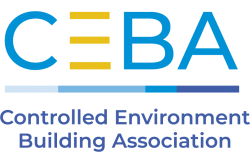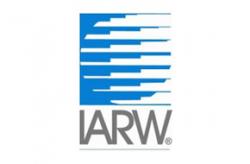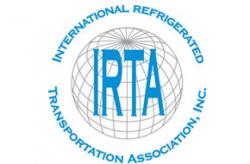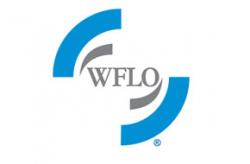Fisher Construction Group of Ceba built By The Best Award
Shared campus provides best-in-cold solutions for customer Dole Fruit.
Fisher Construction Group, Inc. has received the 2021 Built by the Best Award for constructing the year’s most innovative and complex temperaturecontrolled facility.
The company’s recent design-build of the United States Cold Storage’s newest, fully automated and state-of-the-art cold storage and processing facility in McDonough-Medline, near Atlanta, Georgia, United States, was the project that earned this recognition. “This was certainly an exciting project,” says Scott Guimond, Senior Project Manager for Fisher. “We were very proud and honored to be United States Cold Storage’s selected and trusted partner for this important project. I believe we were ultimately selected because of our ability to provide transparency on financials and our expertise to deliver turnkey, design-build solutions for both temperaturecontrolled storage and processing spaces.” Fisher added that the company’s extensive experience in the design and construction of high-rise, fully automated cold storage facilities helped, also. The McDonough Medline campus was selected as the strategic location for United States Cold Storage to provide additional bestin-cold solutions for its customer – Dole Fruit. The shared campus approach promotes and leverages synergies between processors and storage teams, says Fisher.
“Ultimately, the return on investment was maximized on the project by strategically positioning the facility adjacent to an existing conventional frozen space, thereby leveraging existing refrigeration, fire protection, storm and other vital infrastructures while utilizing the remaining expansion space to its full potential,” says Michael Adkins, Engineering Manager, United States Cold Storage. “It was our most significant expansion ever and included a processing center designed and built for Dole Fruit.” The newly constructed facility on United States Cold Storage’s McDonough campus maximizes the site’s footprint of 110 feet with 14,944,285 cubic feet of storage. The facility is designed to operate at temperatures ranging from -20 degrees F to 55 degrees F, as well as 32 degrees F to 55 degrees F in the processing space.
Key Challenges
The project began in late 2019, with completion scheduled for January 2021. The first challenge came when the COVID-19 pandemic hit early on. “We had started construction and had been into it for a couple of months, when the whole construction industry was impacted,” says Juan Arellano, Fisher’s Project Manager for United States Cold Storage Atlanta. “Since the project was essential to the country’s food supply chain, we moved forward. We brought the team together and developed solutions to respond to this unprecedented situation. Though it was a challenge, and some people were unable to come to work, we kept the project moving by creating a safe workplace. There was no day that COVID stopped us from working. That’s something that we were all very proud of—we kept moving forward.”
Another challenge that needed to be expertly managed was that the expansion was on an active and operating site. It was imperative to be noninvasive and covert in the building process, yet effective. Specific logistical challenges included limited laydown areas, shared operational and construction entrances as well as management of a robust set of safety policies specifically intended to provide a safe interface between construction and United States Cold Storage operations. Additionally, this project had a cost control variable that added to the project complexity. Specifically, this build required 100% financial accuracy and transparency. The United States Cold Storage engineering team in conjunction with Fisher had to identify and clearly communicate to all project participants the cost segregation required to correctly tabulate trending costs specific to the tenant processing (Dole) space from the cold storage and site (United States Cold Storage) spaces. This data was made accessible in real time and aided in critical project decisions.
Savvy Innovation
The McDonough-Medline facility has nearly 253,000 square feet of usable space built beside United States Cold Storage’s 236,000-square-foot temperature-controlled warehouse built five years earlier. The new addition accommodates 47,000 new pallet positions. The construction technique used for the high-bay expansion is leading edge with the structure envelope supported by the storage racks to maximize product density and save costs by replacing structural steel for structural racks. The hybrid direct expansion-refrigeration system by Innovative Refrigeration was well thought out and creative in numerous ways, according to Arellano. It employs minipenthouses that provide a safe and serviceable installation on a more than 100-foot high-rise, rack-supported building. And the system offers strategic equipment locations as the facility’s cold dock has multiple conveyor systems across two levels with transfer fans strategically located to avoid dead air spaces. These fans are controlled and easily adjusted by the facility to maintain the required operating conditions on the cold dock. The fans also utilize re-heat humidity controls for dehumidification on the dock during the hot and humid Georgia summers. Additionally, the expansion is specifically designed to keep the overall ammonia charge below the 10,000-pound threshold.
“Despite ammonia’s dominance in the industry throughout the last century, many are looking to other options to minimize the hazard for facility staff while keeping regulatory bodies at bay,” Arellano says. “It is unheard of for refrigeration systems of this size primarily using ammonia to have charges below 10,000 pounds. However, the United States Cold Storage Medline facility has accomplished this.” Regarding safety, the United States Cold Storage engineering team is credited with developing benefits for its customer by requiring a glycol heat exchanger to utilize only glycol refrigerant to their tenant space eliminating the risk to their customer of having ammonia equipment in their space. The facility also utilizes the most advanced conveyor systems available, alongside nine 100-foot-tall cranes in the automated warehouse. The conveyor system allows United States Cold Storage operators to efficiently handle the product throughout the facility with minimal forklift interface.
Sustainability Efforts
United States Cold Storage’s mission is to provide the very best long-term solution for its customer by providing added value through managing their customer’s refrigeration system and being on-site to provide support along the way. “The concept of the assignment to vertically integrate processor and cold storage operator on a single campus lays a foundation of sustainability at the core of the project,” Guimond says. “This scenario replaces interfacing truck trips between remote facilities with a simple and effective pallet transfer through a demising wall.” By nature, ASRS facilities offer greater product density over less footprint. This drastically reduces the need for lighting and energy/ heat infiltration. These factors, coupled with reduced opening sizes for product interface locations, have a measurable impact on the overall building’s overall energy consumption. “Throughout the design process, Fisher and United States Cold Storage looked to leverage all existing infrastructures, where applicable, for both cost savings and sustainability advantages,” Guimond says. “The team sought to match new refrigeration equipment with existing to provide significant cost savings by keeping United States Cold Storage’s maintenance and training programs as simple as possible despite the large expansion.” The team also achieved long-term energy savings as refrigeration penthouses and the new evaporative condenser are controlled by VFDs (variable frequency drives) to maintain precise temperatures while increasing energy efficiency. Additionally, the project utilized all the standard energy savings measures implemented in most controlled environment facilities built today by using elements such as LED lights, high-speed doors and dock seals.
Partnership Key to Success
The United States Cold Storage Medline expansion project faced various challenges that were mitigated via teamwork between all stakeholders. Throughout the design and construction of the project, communication and continual alignment of goals were of the upmost importance to ensure project success. An excellent example of the team’s man - agement was spotlighted during the weekly schedule meetings, where the project’s trades from the Northeast, Southeast, Northwest and Southwest came together to develop and update the pull plan schedules. The manage - ment team worked to bring all stakeholders together using open and honest communi - cation, repeatedly emphasizing the larger common vision from management to field. The Fisher team also stressed the impor - tance of leveraging the expertise of United States Cold Storage’s engineering team as being a key to the overall success of the project. Additional collaboration with the onsite United States Cold Storage operations managers provided valuable direction and leadership throughout the entire project. “The collaboration between all parties was central to our approach,” Arellano says. “Fisher worked hand in hand with United States Cold Storage to make team decisions. We ensured everyone was on the same page as we focused on making the very best decisions collectively, which ultimately brought a lot of value to the project. We were able to meet the schedule and budget.”
KEITH LORIA is an award-winning journalist who has been writing for major newspapers and magazines for close to 20 years, on topics as diverse as sports, business and technology.
EMAIL: freelancekeith@gmail.com



